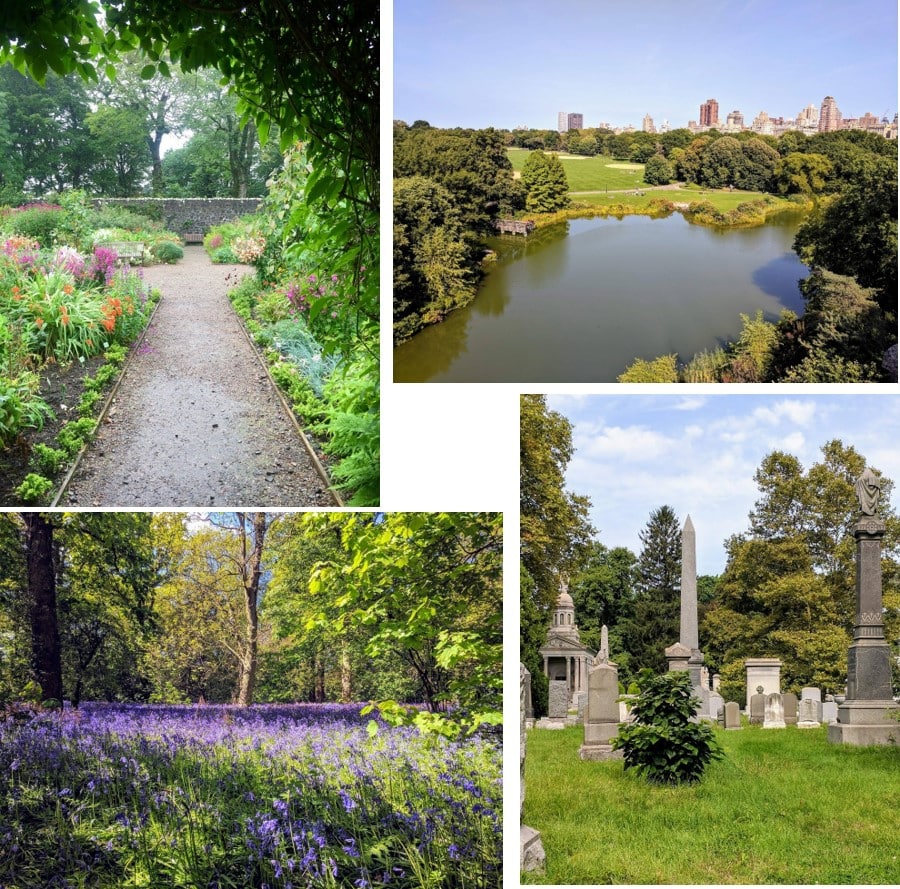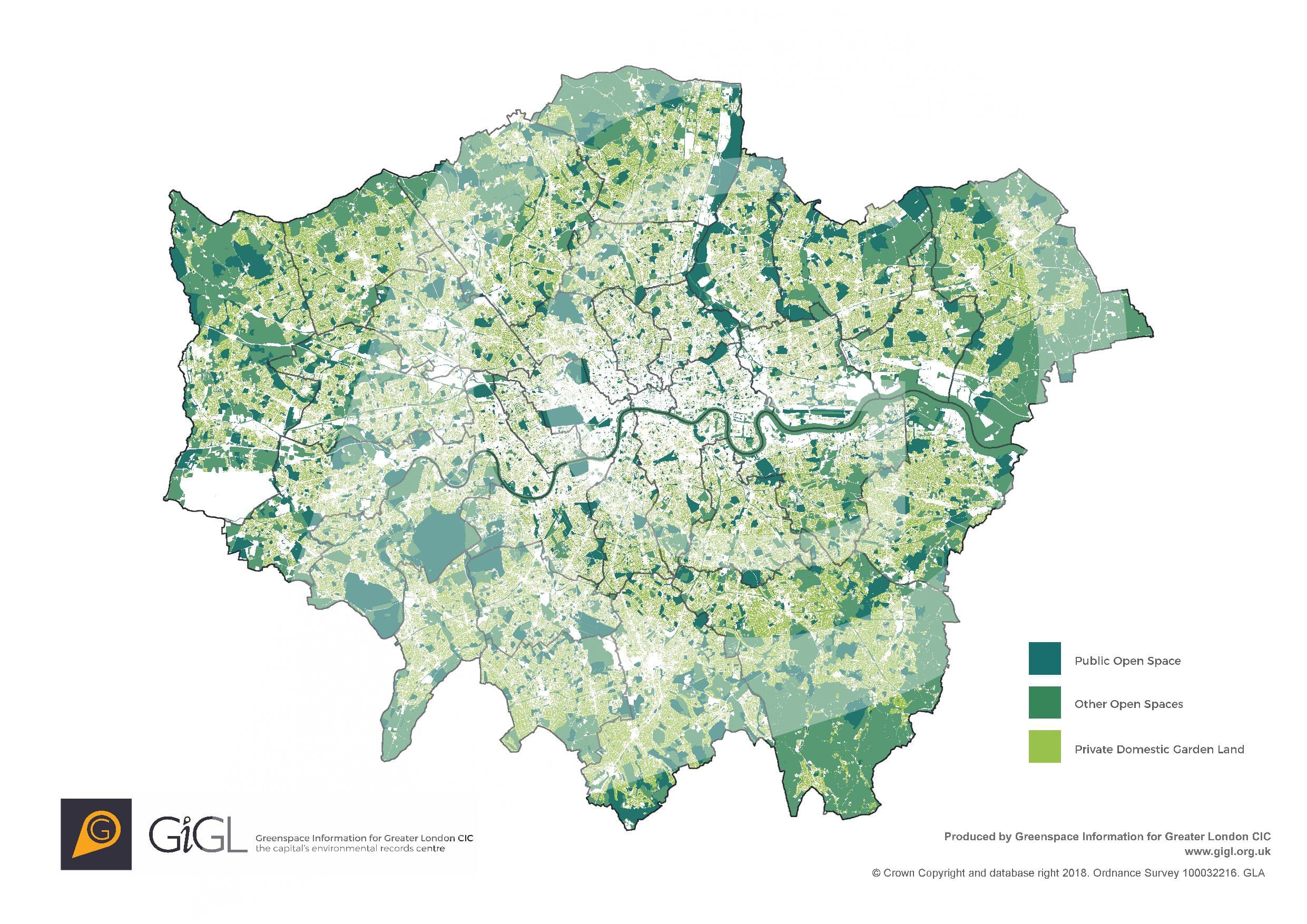Dr Vikki Houlden, Newcastle University – Centre for Urban and Regional Development Studies & the Spatial Analytics and Modelling Group
I was in my fourth and final year of study as a Civil Engineer at the University of Warwick when, on a bit of a whim, I signed up for a module on Health and Wellbeing in the Built Environment. Until then, I’d been reasonably interested in the physical forces involved in designing a structure but whilst studying that module, I suddenly had a comic-book light bulb moment; I realised that creating environments for people, to support their mental wellbeing (and not just their roof), was what I wanted to do with my life.
We’ve long known that living or working near greenspaces can help us relax or feel happier, but surprisingly, there has been relatively little research into where greenspaces are most effective for mental wellbeing; most studies to date have been restricted to local areas rather than down to the individual level, or have focused on the measurement of mental ill health. But mental wellbeing is more than just an absence of distress. Mental wellbeing reflects a state of positive mental health from which everyone can benefit.
Perhaps due to this lack of sufficient research, there is very little in the way of legal requirements for greenspace provision in the UK. Instead, there are local and regional policies outlining recommended minimum distances residents should have to travel to access greenspaces. These range from having a greenspace within an 800m as-the-crow-flies buffer, to no further than 300m on foot. Natural England published a guideline for the whole East of England region called the Accessible Natural Greenspace Standard (ANGSt), which recommends ‘natural greenspace’ of at least 2 hectares within a 300m walking distance of all homes, based on surveys and analyses of walking patterns; this archived guideline has not been updated in nearly a decade, and it is not known if it is optimal for improving health and wellbeing.
Inspired by this uncertainty and driven by the desire to be the first to prove the relationship between greenspace and mental wellbeing, I signed up for a PhD in Urban Science with Warwick Institute for Science of Cities and spent the next 4 years trying to figure out how and why nature can be so important for us, and subsequently how we can go about bringing this into the city.
My PhD began in 2015, when greenspace data was still pretty sparse on the ground (pun intended). Ordnance Survey, for instance, only released their national MasterMap Greenspace layer 2 years ago, and most other sources aggregated land cover information to local authority levels, which aren’t ideal for measuring real people’s neighbourhood experiences.
In a desperate trawl of the internet, I stumbled upon the GiGL London’s Open Spaces map (and as a born-again Geographer, a good map gets me a bit over-excited). This detailed GIS-generated map covered all greenspaces in London, including their type, size and location; this information is vital for comprehensively modelling individual-level access to greenspaces and analysing the potential benefits of different types of greenspaces.
A good place to start.
The Research
To measure mental wellbeing, we drew data from the Annual Population Survey which includes data from over 25,000 London residents between 2012 and 2015. As well as detailed socio-economic and demographic questions, the Survey asks respondents to rate their current life satisfaction, happiness, and sense that the things they do in their life are worthwhile, on a scale of 1 to 10 (all quite important things for feeling mentally well, I think you’ll agree).
By locating individuals according to their postcode, we calculated the amount of greenspace that each respondent could access within a range of distances, testing the assumption that 300m was ideal. Modelling how the amount of accessible greenspace related to the mental wellbeing scores (while holding demographic and socio-economic characteristics constant), we were able to identify the proximity and type of greenspace which is most strongly associated with mental wellbeing.
At risk of proving the ANGSt guidelines right, we discovered a potential dose-response effect whereby the strongest associations were seen for greenspaces within 300m, and these associations for greenspaces decreased with increasing distance, to almost 0 by the time you have to travel 1km. In more human level terms, for every increase of one hectare of land (about the size of a rugby pitch) within 300m, life satisfaction was 8% higher.
If you’re a fan of a graph, Figure 3 represents how this association depreciates over distance. By examining spatial patterns in the data (using Geographically Weighted Regression, if technical terms are your thing), we noticed that the strength of this relationship varied across space. In other words, there were some areas of London where greenspace seemed to be more important for mental wellbeing than others.
Investigating this further, we looked at the different types of greenspace available within this, probably pretty reasonable, 300m distance. By comparing the most common urban greenspaces (natural areas, parks, and outdoor sports facilities), we found that, as I had hedged my bets, natural greenspaces revealed the strongest and most significant association with mental wellbeing.
So it looks like these ANGSt folks might have been onto something after all. But there are a few caveats worth noting. My research so far has been based in London but it is essential that we see whether these associations hold across the country before we leap into making this law (although if you happen to be someone who can help me with the legal side, advice is very much welcome!).
Back at Newcastle, where I am currently a post-doctoral Research Associate at Newcastle University, I am in the process of making these investigations; in particular, extending the original studies by examining how people’s mental wellbeing changes in response to variance in their nearby greenspace. This is vital if we are to ascertain that it’s greenspace causing the improvements to wellbeing, and not some weirdly convincing coincidence. If we can prove this, then maybe we’d be able to make these critical legal changes to promote and protect our greenspaces.
But I think we can safely say we’re at a place where we know greenspaces to be important – not only for our mental wellbeing, but by providing us with access to nature, an opportunity to get outdoors, and making our increasingly urban neighbourhoods more attractive. And in the meantime, if you are feeling a little stressed or down, connecting with your local greenspace might just help you reset, and remember how beautiful the world really can be.
You may find Vikki’s research paper here: https://eprint.ncl.ac.uk/258379
For more information, please contact: Dr Vikki Houlden, Newcastle University – Centre for Urban and Regional Development Studies & the Spatial Analytics and Modelling Group @VikkiHouldenPhD
Available GiGL data:
GiGL manage two areas of deficiency datasets for Greater London: access to nature and access to public open spaces. Information on the formation of these data is available in our articles London Sets a Trend and Accessing Wildspace.




The original research paper is an interesting approach and a considerable advance on the original “research” that led to the ANGST criteria. These criteria were based upon poor research on small numbers and amounted to little more than a guess. Here we see a much better approach, using modern multivariate statistical methods. However, the answers are somewhat constrained by the scope of the sample (based upon interviews with adults only and so not representing the health of young people, for example) and by the model employed for distance to the open space (straight line distance to centroid, rather than walking distance to a point of entry, for example). With these caveats, the figure illustrates a novel finding on mental wellbeing, somewhat suporting the original research on ranging behaviour underlying ANGST, so most welcome.
In practice, unfortunately, the protection and management of open spaces remains a cindrella subject. Planning authorities have little control and austerity and privatisation have led to many open spaces getting minimal care. The results should assist with open space strategies, but we know all too well that strategies need resources to implement. Sadly, the resourses that there are follow influence more than need.
No link is made with the areas of deficiency in access to nature (subject to articles in the Gigler some years back). Here a one-kilometre actual walking distance was employed, not because it’s supported by research into people’s needs, but because it’s about the right distance to secure a nearby natural open space for everyone and it provided a helpful indicator of progress in that. It’s use in practice shows that progress can be made